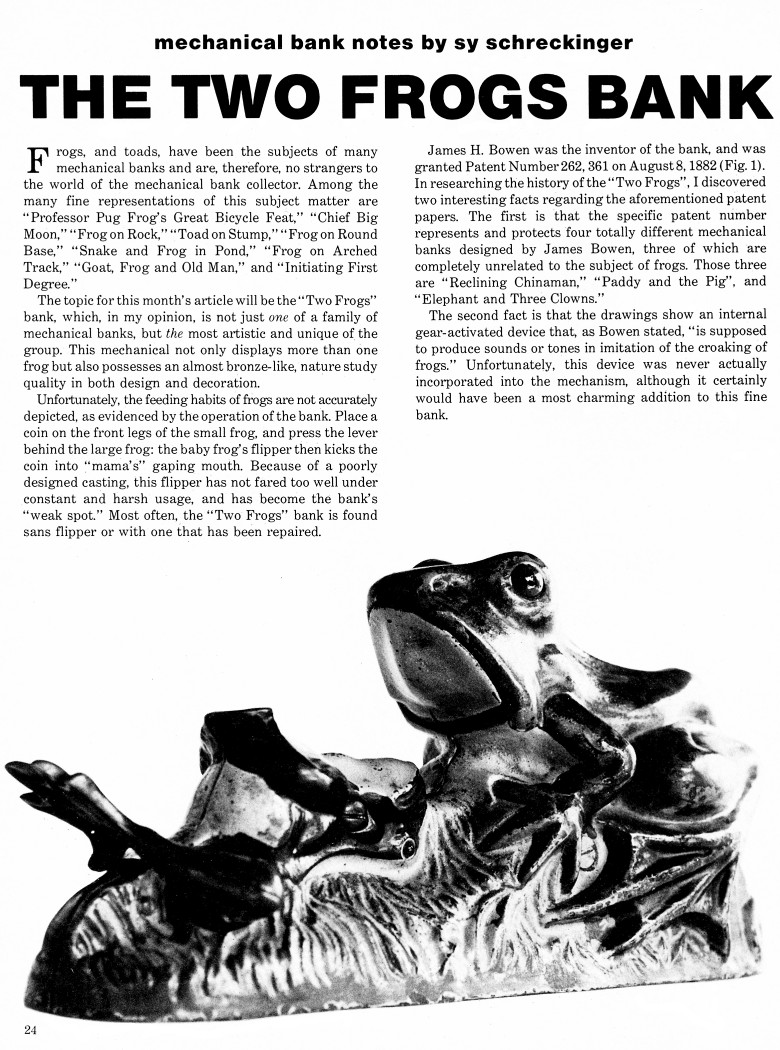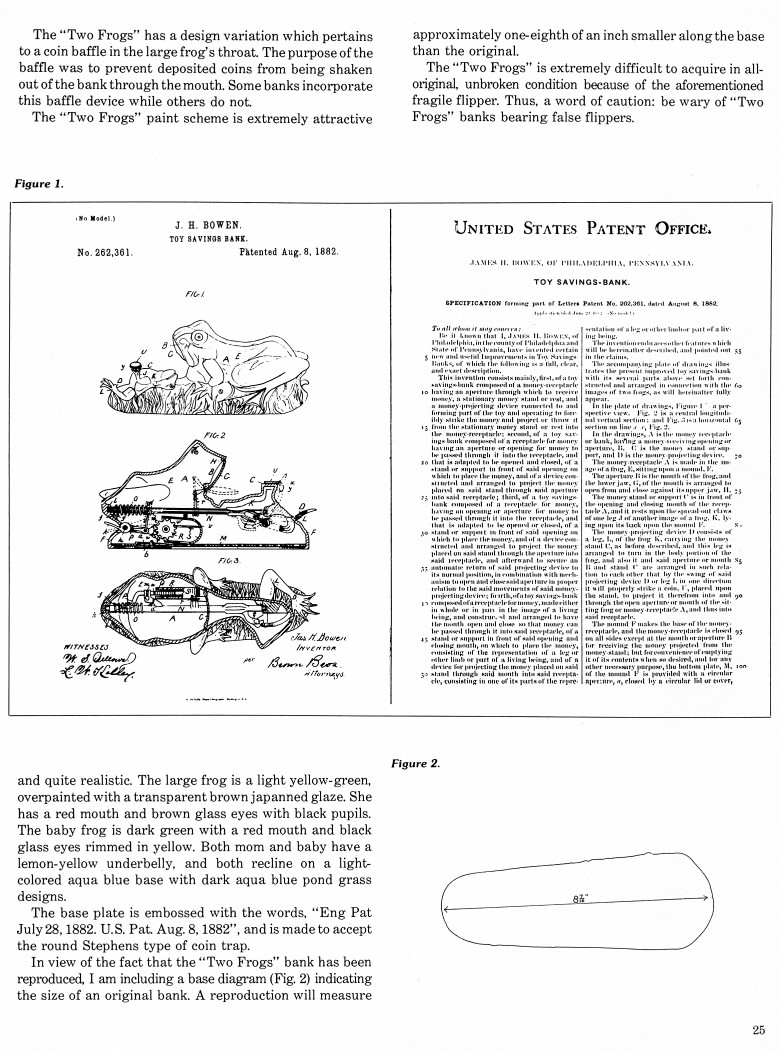|
The Two Frogs Bank
by Sy Schreckinger – ANTIQUE TOY WORLD Magazine – March, 1983
Frogs, and toads, have been the subjects of many
mechanical banks and are, therefore, no strangers to the world of the
mechanical bank collector. Among the many fine representations of this
subject matter are "Professor Pug Frog's Great Bicycle Feat," "Chief Big
Moon, "Frog on Rock," "Toad on Stump," "Frog on Round Base," "Snake and
Frog in Pond," "Frog on Arched Track, " "Goat, Frog and Old Man," and
"Initiating First Degree."
The topic for this month's article will be the "Two Frogs" bank,
which, in my opinion, is not just one of a family of mechanical banks, but
the most artistic and unique of the group. This mechanical not only
displays more than one frog but also possesses an almost bronze-like,
nature study quality in both design and decoration.
Unfortunately, the feeding habits of frogs are not accurately
depicted, as evidenced by the operation of the bank. Place a coin on the
front legs of the small frog, and press the lever behind the large frog:
the baby frogs flipper then kicks the coin into "mama's" gaping mouth.
Because of a poorly designed casting, this flipper has not fared too well
under constant and harsh usage, and has become the bank's "weak spot."
Most often, the "Two Frogs" bank is found sans flipper or with one that
has been repaired.
James H. Bowen was the inventor of the bank, and was granted Patent
Number
262,361 on August 8. 1882 (Fig. 1). In researching the history of
the "Two Frogs", I discovered two interesting facts regarding the
aforementioned patent papers. The first is that the specific patent number
represents and protects four totally different mechanical banks designed
by James Bowen, three of which are completely unrelated to the subject of
frogs. Those three are "Reclining Chinaman," "Paddy and the Pig", and
"Elephant and Three Clowns."
The second fact is that the drawings show an internal gear-activated
device that, as Bowen stated, "is supposed to produce sounds or tones in
imitation of the croaking of frogs." Unfortunately, this device was never
actually incorporated into the mechanism, although it certainly would have
been a most charming addition to this fine bank.
The "Two Frogs" has a design variation which pertains to a coin
baffle in the large frog's throat. The purpose of the baffle was to
prevent deposited coins from being shaken out of the bank through the
mouth. Some banks incorporate this baffle device while others do not.
The "Two Frogs" paint scheme is extremely attractive and quite
realistic. The large frog is a light yellow-green, overpainted with a
transparent brown japanned glaze. She has a red mouth and brown glass eyes
with black pupils. The baby frog is dark green with a red mouth and black
glass eyes rimmed in yellow. Both mom and baby have a lemon-yellow
underbelly, and both recline on a light colored aqua blue base with dark
aqua blue pond grass designs.
The base plate is embossed with the words, "Eng Pat July 28. 1882,
U.S. Pat Aug. 8. 1882", and is made to accept the round Stephens type of
coin trap.
In view of the fact that the "Two Frogs" bank has been reproduced, I
am including a base diagram (Fig. 2) indicating the size of an original
bank. A reproduction will measure approximately one-eighth of an inch
smaller along the base than the original.
The "Two Frogs" is extremely difficult to acquire in all-original,
unbroken condition because of the aforementioned fragile flipper. Thus, a
word of caution: be wary of "Two Frogs" banks bearing false flippers.
|


